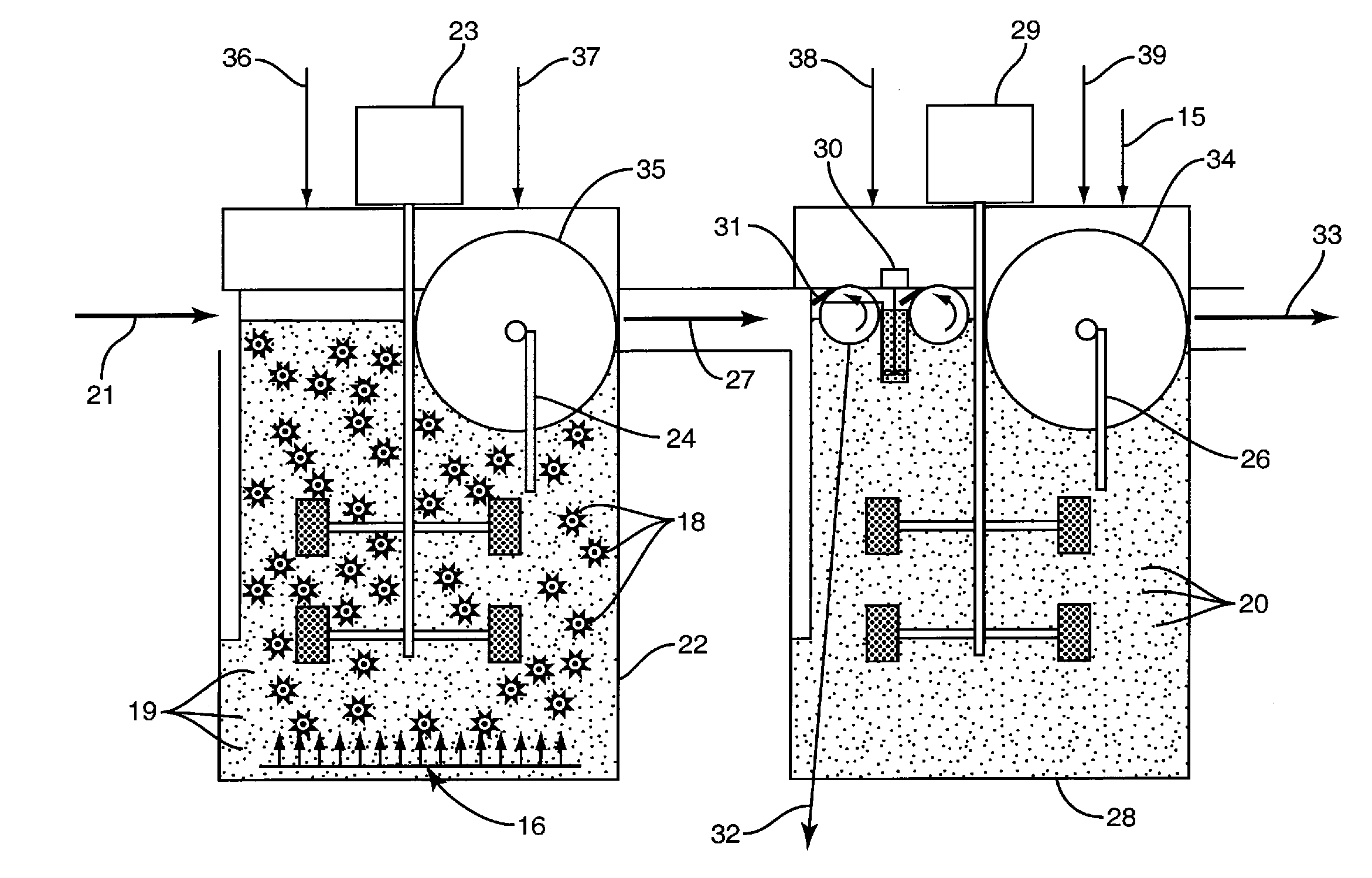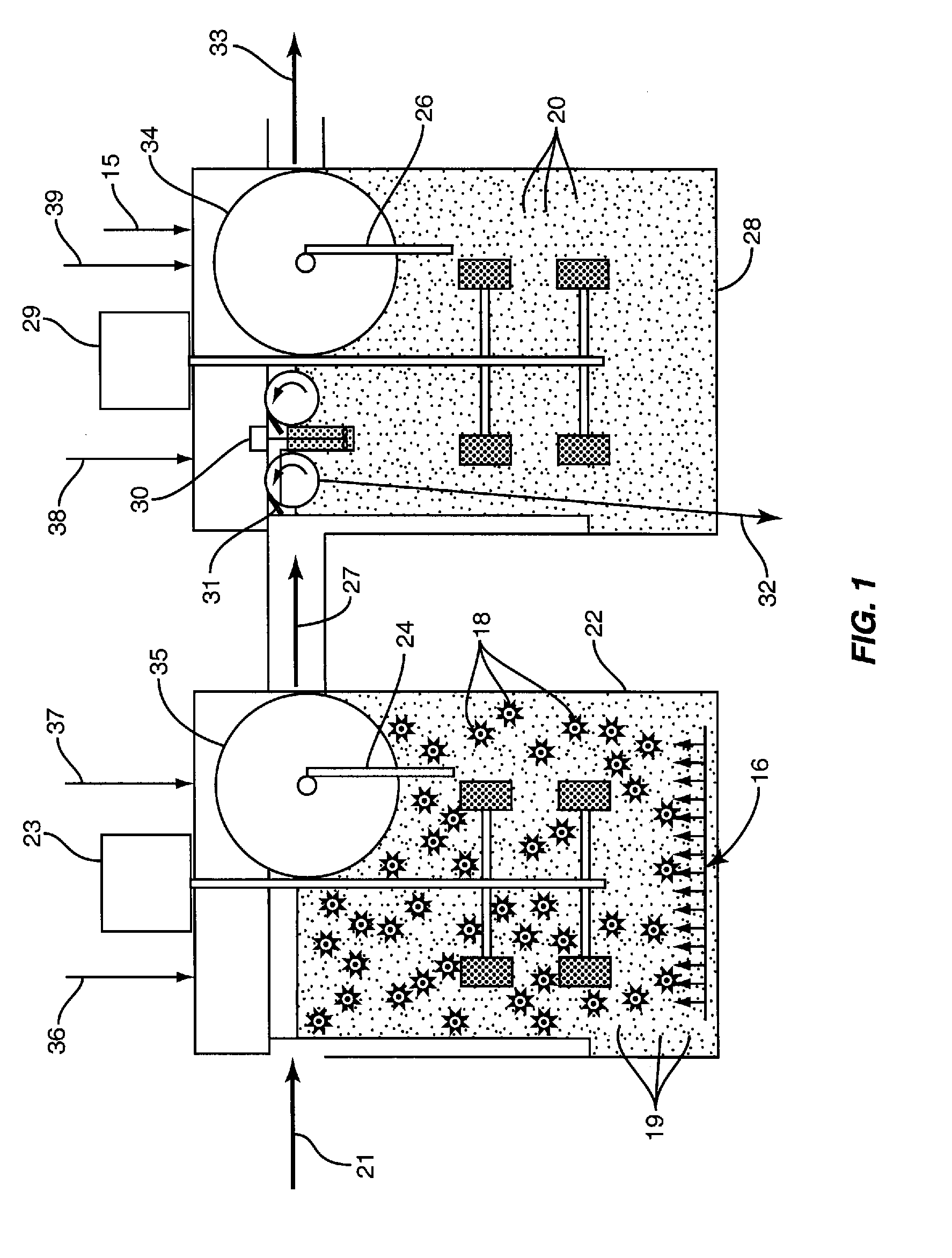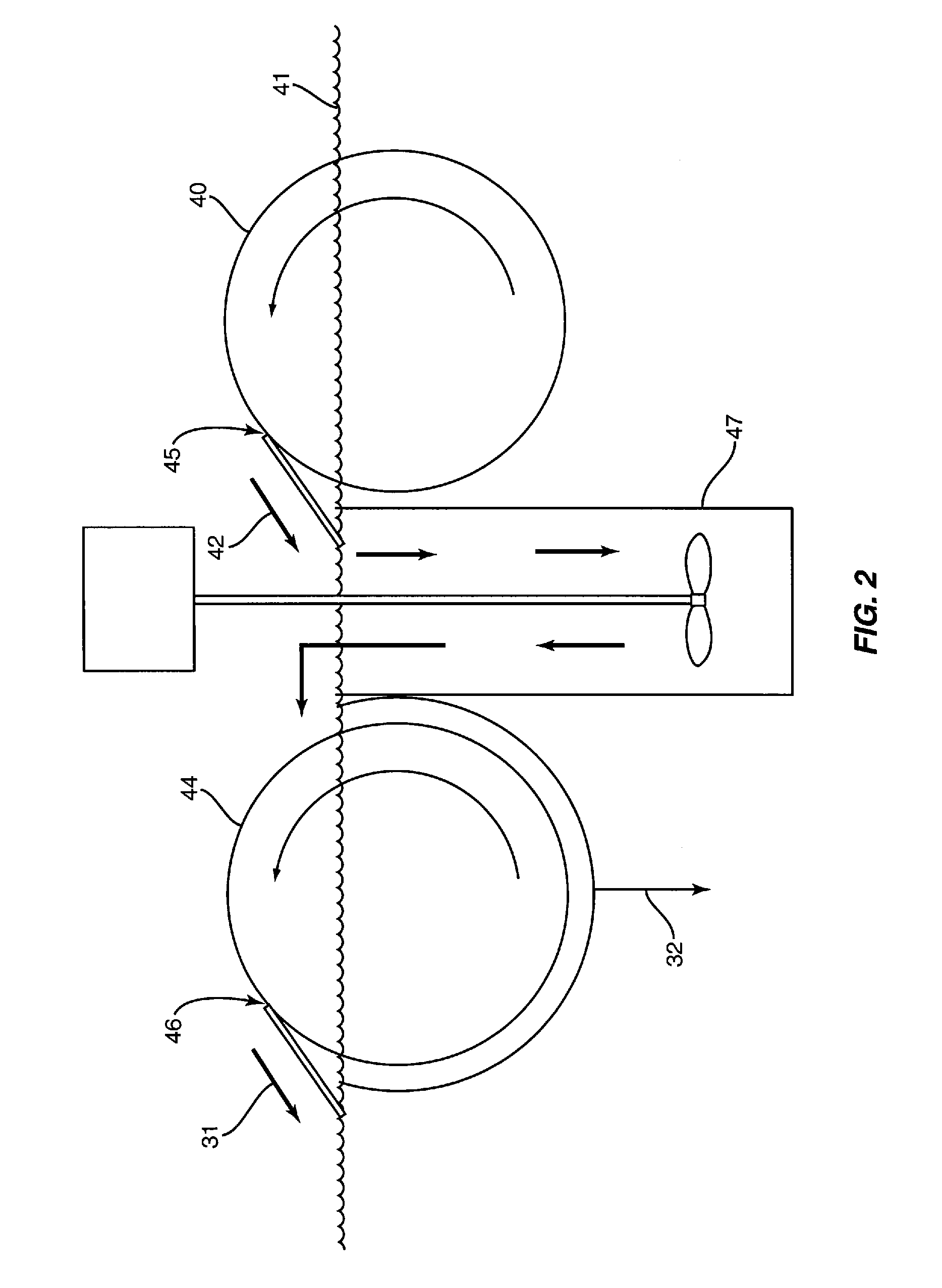Use of a magnetic separator to biologically clean water
a magnetic separator and biologically clean technology, applied in the direction of filtration separation, multi-stage water/sewage treatment, separation process, etc., can solve the problems of secondary pollution, a large amount of sludge that must be disposed, and difficult maintenance of conditions
- Summary
- Abstract
- Description
- Claims
- Application Information
AI Technical Summary
Benefits of technology
Problems solved by technology
Method used
Image
Examples
Embodiment Construction
[0022]The present invention relates to removing dissolved pollutants from water using Magnetic Bed Media (MBM), or magnetic seed such as magnetite or other ferromagnetic materials. It is applicable to industrial wastewater, municipal wastewater, potable water, combined sewer overflow, storm water, process water, cooling water and any other waters that contain dissolved organic or inorganic contaminants that can be treated biologically. The invention involves a Magnetic Separation Bio-Reactor (MSBR), which combines magnetic separation with activated sludge treatment in a process that has significant advantages over the membrane bio-reactor (MBR) technology discussed here before. The mechanical membrane in the MBR system is replaced with a “magnetic separator” for magnetic separation of the biologically-reduced pollutants from the water stream.
[0023]More specifically, the present invention provides a method for using ferromagnetic solids as a magnetic bed media (MBM) for growing biofi...
PUM
| Property | Measurement | Unit |
|---|---|---|
| pore size | aaaaa | aaaaa |
| magnetic | aaaaa | aaaaa |
| flocculation | aaaaa | aaaaa |
Abstract
Description
Claims
Application Information
 Login to View More
Login to View More - R&D
- Intellectual Property
- Life Sciences
- Materials
- Tech Scout
- Unparalleled Data Quality
- Higher Quality Content
- 60% Fewer Hallucinations
Browse by: Latest US Patents, China's latest patents, Technical Efficacy Thesaurus, Application Domain, Technology Topic, Popular Technical Reports.
© 2025 PatSnap. All rights reserved.Legal|Privacy policy|Modern Slavery Act Transparency Statement|Sitemap|About US| Contact US: help@patsnap.com



